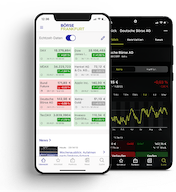"The curse and blessing of diversification: what investors need to consider"

The mantra of investors is that broadly diversified portfolios reduce investment risk. Many take the principle of diversification into account in their portfolios. However, there are several pitfalls, notes Ali Masarwah, fund analyst and managing director of the financial services provider Envestor, in his column.
24. March 2025 FRANKFURT (envestor): Minimizing risks by spreading money across different asset classes is not only the mantra of financial science, but also the motto of many investors in practice. The central assumption is that the correlation between the various assets is low, which reduces the overall portfolio risk. There are catchy mottos to go with it - diversification is the only “free lunch” that investors can expect. We also emphasize the benefits of diversification in our publications. However, there are pitfalls to consider. We have created a correlation matrix over a period of almost ten years and one for the year 2022. We looked at global equities, European equities, German bonds, euro bonds, Bitcoin, gold and commodities. Some considerations:
Long-term correlations: A stable framework with clear patterns
Over the long term, the relationships between asset classes are unsurprising and largely predictable to encouraging. Much has been written about the longer-term outperformance of the MSCI World Index versus European equities (MSCI Europe). Nevertheless, the correlation of 0.81 between European equities and global equities is high. This close correlation shows that geographical diversification within the equity market offers limited advantages on the risk side.
The situation is different when comparing equities and bonds. It does not matter whether you use German bonds (REXP) or the broader Bloomberg Euro Aggregate Bond Index. The correlations of 0.10 and 0.19 with the MSCI World are low - albeit not perfect. However, if you take European equities as a benchmark, you will achieve better diversification with German bonds than with European bonds.
The three assets gold, Bitcoin and commodities are exciting. While gold and Bitcoin have balanced equity risks well over the last decade, commodities have been more closely correlated with the MSCI World than investors would presumably expect. The diversification benefit here is limited. This is only surprising at first glance: broadly diversified commodity baskets largely include energy and industrial metals. These depend on the performance of the global economy, which in turn shapes the equity fever curve. That leaves gold and Bitcoin, which have very low correlations with global equities and European equities.
So far, so good. However, things are not quite so simple after all, as the year 2022 shows.

Correlations in 2022: a year of upheaval
The correlation matrix for 2022 shows significant changes compared to the long-term view. The correlation between global and European equities falls to 0.65. This is due to the different trajectories of the recovery after the COVID-19 pandemic or the different impact of the Ukraine war and the energy crisis on European and global/US equities.
At the same time, the behavior of equities and bonds converged. The MSCI World and the Bloomberg Euro Aggregate Bond Index had a correlation of 0.42 in 2022. This reflects the impact of rising interest rates, which sent both equities and bonds plummeting. Some of Bitcoin's shine has also been lost. Investors saw the supposed “digital gold” as a risk asset rather than a safe haven. Considering that the crypto sector has been rocked by a number of scandals since 2021, this is hardly surprising. However, gold and commodities proved to be remarkable anchors of stability.

Opportunities and limitations of diversified portfolios
Diversification offers numerous advantages for investors. One of the most important is the reduction of risk due to the low correlation between different asset classes. In the long term, bonds, gold and possibly Bitcoin can reduce the risk of an equity portfolio. But there are limits. The year 2022 has once again confirmed that you don't necessarily get the blessing of diversification when you need it most. Systemic risks and liquidity risks can cause all asset classes to correlate more strongly with each other in times of crisis - a phenomenon that was observed during the financial crisis, the COVID-19 pandemic and the 2022 inflation spike. In such cases, the benefits of diversification are significantly reduced.
Beyond individual events such as the Covid crisis, rising inflation or the Russian invasion of Ukraine, investors also need to understand how sensitive their portfolio is to the economic cycle. In a pronounced inflationary environment in which equities suffer, commodities and gold have traditionally provided investors with more benefits than bonds. However, if prices only rise moderately, equities are considered a good inflation hedge and bond prices can also remain stable. The “crisis currency” gold can then be of less benefit.
In a deflationary environment, on the other hand, government bonds perform well, while equities suffer from stagnating prices. This constellation existed for long periods in Europe after the end of the major financial crisis in 2009. Stagflation is one of the most difficult economic scenarios for investors. It combines high inflation with stagnating economic growth and high unemployment. Historical data shows that gold performs exceptionally well in such phases, while equities and bonds come under equal pressure. Given the lack of history, the jury is still out on whether Bitcoin is a diversifying asset in these economic phases or whether equity investors are better off with “real gold”.
By Ali Masarwah, 24. March 2025, © envestor.de
About the Author
Ali Masarwah is a fund analyst and managing director of envestor.de, one of the few fund platforms that pays cashbacks on fund sales fees. Masarwah has been analyzing markets, funds and ETFs for over 20 years, most recently as an analyst at the research house Morningstar. His expertise is also valued by numerous financial media in German-speaking countries.
This article reflects the opinion of the author and not that of the editorial team of boerse-frankfurt.de. Its content is the sole responsibility of the author.

More articles from this columnist
| Time | Title |
|---|




